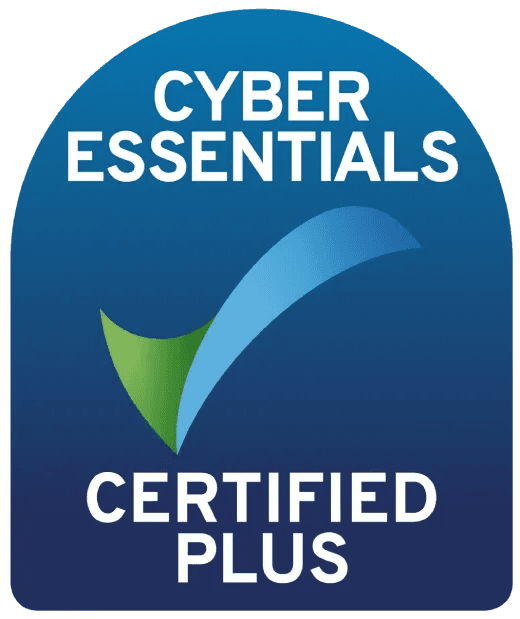Dec 25, 2023
Marketing needs to be part of your plan to scale, here's why

Words by
Kaine Shutler

Scalability isn’t just about refining your system and functionality, it also encompasses considerations such as marketing and retention - factors that can help you grow your user base and engagement over time. You might find that natural growth has brought you to this point, but with a scalable LMS your growth potential is limitless, so give the suggestions below some thought.
Bring reporting and analytics into the platform
As you scale and grow your elearning platform it’s important to consider analytics and reporting. It might not be a priority for you now, but later down the line you might find that a lack of audience insights stops you from making the right decisions in terms of features, user experience and content - all of which can be costly to rectify and do nothing but hinder the growth of your business.
Learning management systems built on an open source framework will have the capacity to integrate with an analytics platform. It’s important to track data that answers the right kinds of questions, data that will allow you to make informed strategic choices rather than using guesswork.
In other instances, reporting and analytics might be an essential part of your monthly tracking, and you might really consider adding some custom report generation tools to make this easier.
Add enrolment dates
This allows you to control the number if users on your system at any one time, you might question how this helps you grow, but there are a few components to this:
You can dedicate your time and resources to a manageable group of users
You’ll have users waiting to enroll requiring less active marketing efforts
Graduates can become affiliates/ ambassadors
Being scalable doesn’t necessarily mean that you’ll have a huge team backing you, you might be a solo entrepreneur or a small business that manages lots of users. You can absolutely still grow, sustainably and consistently, without flooding your system (and team) with an unmanageable number of new users.
For businesses that use this strategy, ‘graduates’ who have enrolled and completed the course can still access the system - they may even go on to be ambassadors who are willing to promote and sell your courses on your behalf (for a commission , of course). They could even access graduate content - one thing that can be asserted, is that they usually require a lot less support and will be more willing to purchase further content.
Devise a marketing strategy
Churn (the loss of paying users) and retention (users who continue to pay/ remain engaged) rates are the two biggest factors that can affect the success of an online training company. If your platform or offering isn’t suitable or presents issues for your users you’re likely to lose them, and this is particularly frustrating in cases where this loss could have been avoided if the system worked as expected.
Beyond addressing these issues, it’s important to have a marketing strategy in place to help you attract and retain new customers, particularly if you have a subscription offering.
In some cases, you’ll probably want to integrate marketing tools like Facebook ads, Google Ads and Clickfunnels to name a few, and it’s better to establish which of these you’ll be using in advance of upgrading your system so you can create a seamless experience for your users and have access to the data and tools you need to track your marketing efforts within the platform itself.
Here are some helpful guides on marketing you can use to help sell more online courses:
Free ebook: How to build a sales page to sell more online courses
Create recurring revenue from your online course with subscriptions
Online course marketing tips for increasing your reach and engagement
Affiliate marketing
If you don’t have the capacity to do all the marketing yourself, one extremely lucrative way of selling your courses and increasing your user base is to create ambassadors who sell your courses for you through affiliate marketing. Similarly to the graduates you have from your last lot of enrolled users, these learners could be willing to spread the word and sell courses on your behalf.
Click here to learn more about how we helped create an affiliates area for a client; helping their affiliates sell more online courses.
Dec 25, 2023
Marketing needs to be part of your plan to scale, here's why

Words by
Kaine Shutler

Scalability isn’t just about refining your system and functionality, it also encompasses considerations such as marketing and retention - factors that can help you grow your user base and engagement over time. You might find that natural growth has brought you to this point, but with a scalable LMS your growth potential is limitless, so give the suggestions below some thought.
Bring reporting and analytics into the platform
As you scale and grow your elearning platform it’s important to consider analytics and reporting. It might not be a priority for you now, but later down the line you might find that a lack of audience insights stops you from making the right decisions in terms of features, user experience and content - all of which can be costly to rectify and do nothing but hinder the growth of your business.
Learning management systems built on an open source framework will have the capacity to integrate with an analytics platform. It’s important to track data that answers the right kinds of questions, data that will allow you to make informed strategic choices rather than using guesswork.
In other instances, reporting and analytics might be an essential part of your monthly tracking, and you might really consider adding some custom report generation tools to make this easier.
Add enrolment dates
This allows you to control the number if users on your system at any one time, you might question how this helps you grow, but there are a few components to this:
You can dedicate your time and resources to a manageable group of users
You’ll have users waiting to enroll requiring less active marketing efforts
Graduates can become affiliates/ ambassadors
Being scalable doesn’t necessarily mean that you’ll have a huge team backing you, you might be a solo entrepreneur or a small business that manages lots of users. You can absolutely still grow, sustainably and consistently, without flooding your system (and team) with an unmanageable number of new users.
For businesses that use this strategy, ‘graduates’ who have enrolled and completed the course can still access the system - they may even go on to be ambassadors who are willing to promote and sell your courses on your behalf (for a commission , of course). They could even access graduate content - one thing that can be asserted, is that they usually require a lot less support and will be more willing to purchase further content.
Devise a marketing strategy
Churn (the loss of paying users) and retention (users who continue to pay/ remain engaged) rates are the two biggest factors that can affect the success of an online training company. If your platform or offering isn’t suitable or presents issues for your users you’re likely to lose them, and this is particularly frustrating in cases where this loss could have been avoided if the system worked as expected.
Beyond addressing these issues, it’s important to have a marketing strategy in place to help you attract and retain new customers, particularly if you have a subscription offering.
In some cases, you’ll probably want to integrate marketing tools like Facebook ads, Google Ads and Clickfunnels to name a few, and it’s better to establish which of these you’ll be using in advance of upgrading your system so you can create a seamless experience for your users and have access to the data and tools you need to track your marketing efforts within the platform itself.
Here are some helpful guides on marketing you can use to help sell more online courses:
Free ebook: How to build a sales page to sell more online courses
Create recurring revenue from your online course with subscriptions
Online course marketing tips for increasing your reach and engagement
Affiliate marketing
If you don’t have the capacity to do all the marketing yourself, one extremely lucrative way of selling your courses and increasing your user base is to create ambassadors who sell your courses for you through affiliate marketing. Similarly to the graduates you have from your last lot of enrolled users, these learners could be willing to spread the word and sell courses on your behalf.
Click here to learn more about how we helped create an affiliates area for a client; helping their affiliates sell more online courses.
Dec 25, 2023
Marketing needs to be part of your plan to scale, here's why

Words by
Kaine Shutler

Scalability isn’t just about refining your system and functionality, it also encompasses considerations such as marketing and retention - factors that can help you grow your user base and engagement over time. You might find that natural growth has brought you to this point, but with a scalable LMS your growth potential is limitless, so give the suggestions below some thought.
Bring reporting and analytics into the platform
As you scale and grow your elearning platform it’s important to consider analytics and reporting. It might not be a priority for you now, but later down the line you might find that a lack of audience insights stops you from making the right decisions in terms of features, user experience and content - all of which can be costly to rectify and do nothing but hinder the growth of your business.
Learning management systems built on an open source framework will have the capacity to integrate with an analytics platform. It’s important to track data that answers the right kinds of questions, data that will allow you to make informed strategic choices rather than using guesswork.
In other instances, reporting and analytics might be an essential part of your monthly tracking, and you might really consider adding some custom report generation tools to make this easier.
Add enrolment dates
This allows you to control the number if users on your system at any one time, you might question how this helps you grow, but there are a few components to this:
You can dedicate your time and resources to a manageable group of users
You’ll have users waiting to enroll requiring less active marketing efforts
Graduates can become affiliates/ ambassadors
Being scalable doesn’t necessarily mean that you’ll have a huge team backing you, you might be a solo entrepreneur or a small business that manages lots of users. You can absolutely still grow, sustainably and consistently, without flooding your system (and team) with an unmanageable number of new users.
For businesses that use this strategy, ‘graduates’ who have enrolled and completed the course can still access the system - they may even go on to be ambassadors who are willing to promote and sell your courses on your behalf (for a commission , of course). They could even access graduate content - one thing that can be asserted, is that they usually require a lot less support and will be more willing to purchase further content.
Devise a marketing strategy
Churn (the loss of paying users) and retention (users who continue to pay/ remain engaged) rates are the two biggest factors that can affect the success of an online training company. If your platform or offering isn’t suitable or presents issues for your users you’re likely to lose them, and this is particularly frustrating in cases where this loss could have been avoided if the system worked as expected.
Beyond addressing these issues, it’s important to have a marketing strategy in place to help you attract and retain new customers, particularly if you have a subscription offering.
In some cases, you’ll probably want to integrate marketing tools like Facebook ads, Google Ads and Clickfunnels to name a few, and it’s better to establish which of these you’ll be using in advance of upgrading your system so you can create a seamless experience for your users and have access to the data and tools you need to track your marketing efforts within the platform itself.
Here are some helpful guides on marketing you can use to help sell more online courses:
Free ebook: How to build a sales page to sell more online courses
Create recurring revenue from your online course with subscriptions
Online course marketing tips for increasing your reach and engagement
Affiliate marketing
If you don’t have the capacity to do all the marketing yourself, one extremely lucrative way of selling your courses and increasing your user base is to create ambassadors who sell your courses for you through affiliate marketing. Similarly to the graduates you have from your last lot of enrolled users, these learners could be willing to spread the word and sell courses on your behalf.
Click here to learn more about how we helped create an affiliates area for a client; helping their affiliates sell more online courses.
Plan your next learning platform with our founder
About Plume
As the leading custom LMS provider serving training businesses in the US, UK and Europe, we help businesses design, build and grow pioneering learning tech that unlocks limitless growth potential.

Plan your next learning platform with our founder
About Plume
As the leading custom LMS provider serving training businesses in the US, UK and Europe, we help businesses design, build and grow pioneering learning tech that unlocks limitless growth potential.

Plan your next learning platform with our founder
About Plume
As the leading custom LMS provider serving training businesses in the US, UK and Europe, we help businesses design, build and grow pioneering learning tech that unlocks limitless growth potential.



